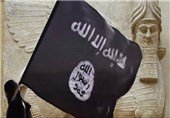Arms supplied by U.S., Saudi ended up with Islamic State, researchers say

Arms provided by the United States and Saudi Arabia to Syrian opposition groups frequently ended up in the hands of Islamic State, an arms monitoring group that analyzed weapons found on the battlefield said on Thursday.
Conflict Armament Research (CAR) said most Islamic State weapons were looted from the Iraqi and Syrian armies. But some were originally provided by other countries, mainly the United States and Saudi Arabia, to Syrian opposition groups fighting against President Bashar al-Assad.
“These findings are a stark reminder of the contradictions inherent in supplying weapons into armed conflicts in which multiple competing and overlapping non-state armed groups operate,” the group said in a 200-page report.
CAR documented at least 12 cases of weaponry purchased by the United States that ended up in Islamic State’s hands, either captured on the battlefield or acquired through shifting alliances within the Syrian opposition. Most of these items later ended up in Iraq, the monitor said.
In one case, it took only two months for Islamic State fighters in Iraq to get their hands on a guided anti-tank missile the United States bought from a European country and supplied to a Syrian opposition group.
All of the items were made in EU states, and in most cases the United States broke contractual clauses prohibiting retransfers by giving the weapons to armed groups in Syria.
“Evidence collected by CAR indicates that the United States has repeatedly diverted EU-manufactured weapons and ammunition to opposition forces in the Syrian conflict. IS forces rapidly gained custody of significant quantities of this materiel.”
CAR said it similarly traced numerous items used by Islamic State back to exports from Bulgaria to Saudi Arabia, and that these were also subject to non-retransfer clauses that should have barred them from being supplied to Syrian warring parties.
Around 90 percent of weapons and ammunition used by Islamic State in Syria and Iraq were made in China, Russia, and Eastern European countries, CAR said, with China and Russia alone accounting for over 50 percent.
“These findings support widespread assumptions that the group initially captured much of its military materiel from Iraqi and Syrian government forces,” the report said.
Russian-made weapons used by Islamic State in Syria outnumbered Chinese ones, “presumably reflecting Russian supplies to the Syrian regime,” CAR said.
Russia is allied with Assad and launched air strikes in Syria in September 2015, its biggest Middle East intervention in decades, turning the tide of the conflict in his favor.
CAR reported last year that Islamic State had been making its own weapons on a scale and with sophistication matching national military forces, and that it had standardized production across its realm.
(Source: Reuters)
Leave a Comment